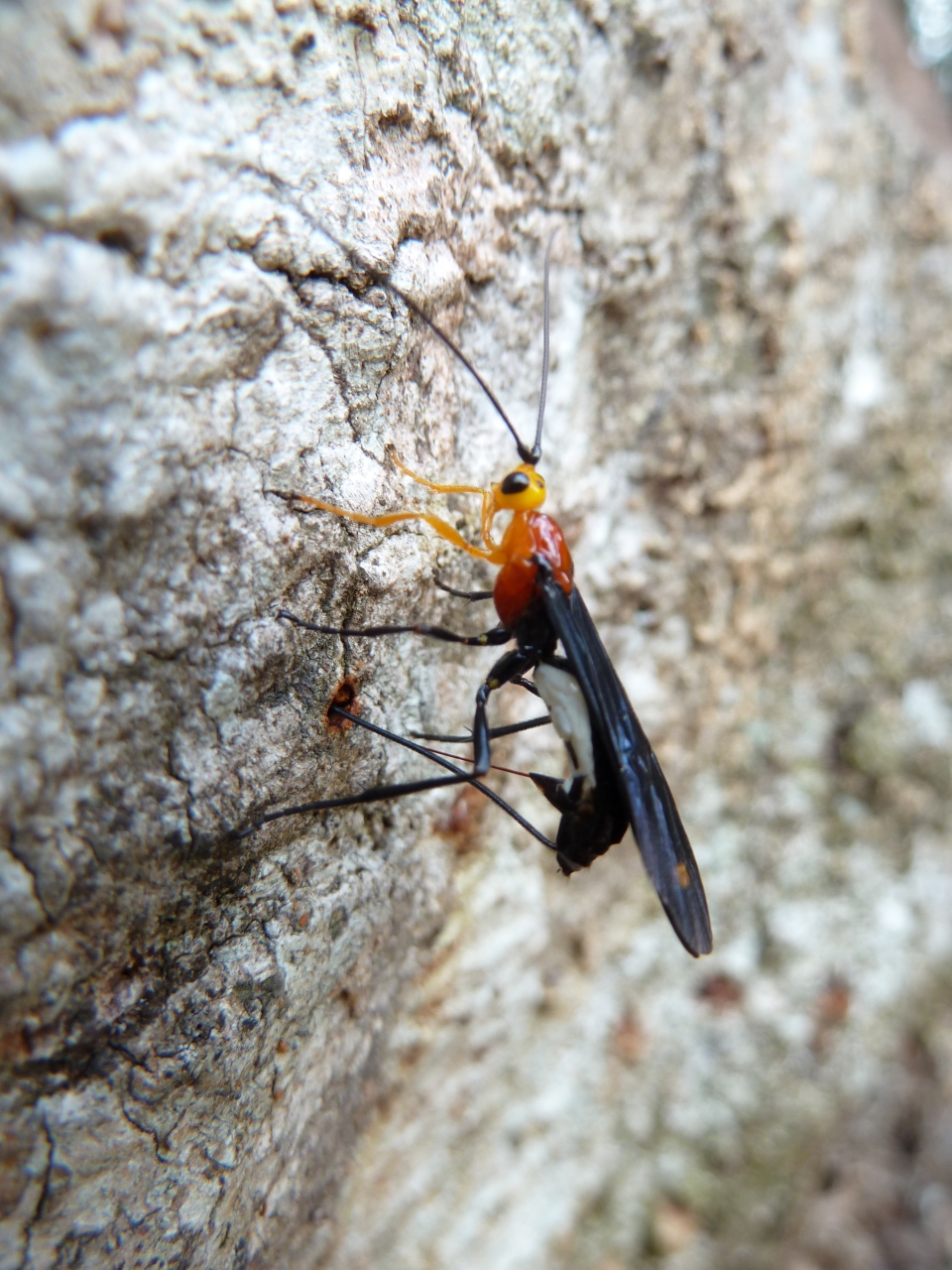
The ichneumonid wasps (Hymenoptera: Ichneumonidae) are a fantastically diverse group of insects that mostly share a similar parasitic life history: they lay their eggs in or on a host insect. Around 24,000 species have been described, and estimates for their full diversity range between 60,000 and 100,000 species.
In Britain there are approximately 2,500 species, almost 10 times our bee diversity. Many species visit flowers, particularly umbellifers, and they can therefore be quite significant (though under-studied) pollinators of things like Wild Carrot (Daucus carota) and its relatives.
With so many species to deal with, identifying ichneumonids can be a daunting task. However the Natural History Museum (London) has produced a free beginner’s guide to identifying them – here’s a link to it.
Although it only covers 22 commonly encountered species (i.e. less than one hundredth of Britain’s species diversity) it’s nonetheless a useful introduction to a fascinating group. However you’ll not be able to identify the species pictured above – I photographed that in Tanzania a few years ago!

Beautiful. Is this one in Gerd Heinrich’s collection?
Are you referring to the photograph? No it isn’t, I’m afraid I don’t know who Gerd is. Is he an ichneumon specialist?
He was, more or less. He collected all kinds of specimens for museums. I have read about him mostly in the books written by his son Bernd, particularly “The Snoring Bird.”
OK, just looked him up on Wikipedia and he’s dead now. I took the photo in 2011.
I’d never heard of this species before, though I must have seen them without realising.
Hello Jeff, I just came across this post. I wanted to mention though that your image is almost certainly a braconid and not an ichneumonid. My expertise isn’t in Braconidae so I can’t say what it is, unfortunately.
Thanks Brandon, noted.